-
 bitcoin
bitcoin $114320.977035 USD
-0.40% -
 ethereum
ethereum $4152.439985 USD
-1.75% -
 tether
tether $1.000111 USD
-0.04% -
 xrp
xrp $2.843037 USD
-1.63% -
 bnb
bnb $1013.349380 USD
-1.62% -
 solana
solana $208.362767 USD
-2.10% -
 usd-coin
usd-coin $0.999783 USD
0.00% -
 dogecoin
dogecoin $0.232559 USD
-1.00% -
 tron
tron $0.333491 USD
-1.09% -
 cardano
cardano $0.806310 USD
0.19% -
 hyperliquid
hyperliquid $45.023720 USD
-1.59% -
 ethena-usde
ethena-usde $1.000819 USD
-0.06% -
 chainlink
chainlink $21.241249 USD
-2.11% -
 avalanche
avalanche $30.035416 USD
-0.66% -
 stellar
stellar $0.364984 USD
-2.05%
How do I manage NFT assets on Trezor?
Trezor securely signs NFT transactions on EVM chains; use trusted dApps and verify addresses to protect your digital assets.
Sep 26, 2025 at 10:19 pm
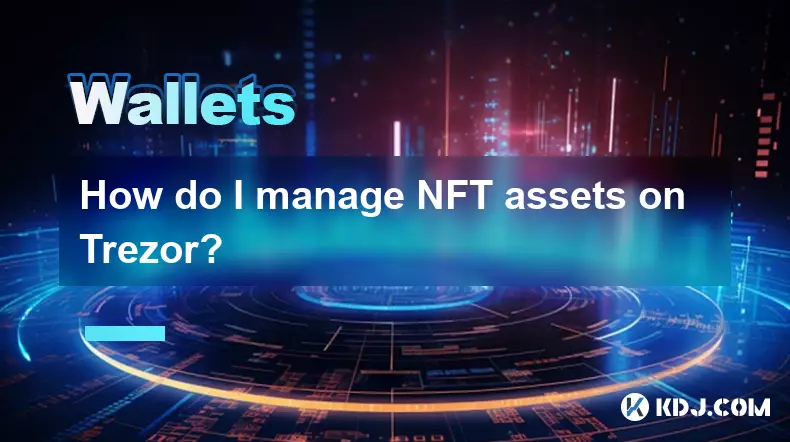
Setting Up Trezor for NFT Management
1. Begin by ensuring your Trezor device is updated to the latest firmware version through the official Trezor Suite application. This guarantees compatibility with current blockchain standards and improves security when interacting with NFTs.
- Install the Trezor Suite desktop or web application and connect your Trezor hardware wallet using a USB cable. Follow the on-screen prompts to unlock the device with your PIN.
- Navigate to the Ethereum or relevant EVM-compatible network account within Trezor Suite, as most NFTs are hosted on Ethereum, Polygon, or similar chains.
- Confirm that you’re accessing the correct wallet address where your NFTs are stored. Misaddressing can lead to irreversible loss of digital assets.
- While Trezor does not display NFTs directly in its interface, it securely signs transactions involving NFTs when connected to compatible third-party platforms.
Viewing and Interacting With NFTs
1. Use external blockchain explorers like Etherscan or Polygonscan to verify ownership. Input your Trezor-linked wallet address to view associated NFT collections.
- Connect your Trezor wallet to decentralized applications (dApps) such as OpenSea, LooksRare, or Rarible via WalletConnect or browser extensions like MetaMask.
- When prompted to sign an NFT transaction—such as transferring or approving a marketplace listing—your Trezor device will require physical confirmation. This ensures no unauthorized actions occur even if your connected dApp is compromised.
- Always double-check the contract address and gas fees before approving any transaction on your device screen.
- Avoid entering your recovery phrase on any third-party site. Trezor never asks for it outside the device setup process.
Security Best Practices for NFT Transactions
1. Only interact with well-known and audited NFT marketplaces. Phishing sites may mimic legitimate platforms to steal your credentials or trick you into signing malicious contracts.
- Enable passphrase protection on your Trezor for an additional layer of access control. A single device can host multiple hidden wallets based on different passphrases.
- Regularly audit the smart contracts linked to your NFTs using tools like Blockchair or EtherVM to detect suspicious functions such as unexpected transfer approvals.
- Revoke unnecessary token approvals using tools like revoke.cash, especially after selling or trading NFTs. Lingering permissions can be exploited later.
- Store records of your NFT metadata and transaction history externally, such as in encrypted storage, to maintain provenance documentation independent of online platforms.
Frequently Asked Questions
Can Trezor display my NFT artwork?No, Trezor hardware devices do not render images or metadata associated with NFTs. You must use external wallets or explorers like Rainbow, MetaMask, or OpenSea to view visual representations of your NFTs.
Is it safe to connect Trezor to MetaMask for NFT trading?Yes, provided you use the official MetaMask browser extension and only connect to verified websites. The private keys remain secured within Trezor, and all signing operations require manual approval on the device.
What should I do if my NFT transaction fails after signing with Trezor?Failed transactions are typically due to network congestion or insufficient gas limits. Check the status on a blockchain explorer. You may need to resend the transaction with adjusted fees, but ensure the original one has expired to avoid duplicate spending.
Can I store NFTs on non-Ethereum blockchains using Trezor?Yes, Trezor supports several EVM-compatible chains such as Binance Smart Chain, Polygon, and Avalanche. Ensure you select the correct network in Trezor Suite or connected wallet interface before initiating NFT transfers.
Disclaimer:info@kdj.com
The information provided is not trading advice. kdj.com does not assume any responsibility for any investments made based on the information provided in this article. Cryptocurrencies are highly volatile and it is highly recommended that you invest with caution after thorough research!
If you believe that the content used on this website infringes your copyright, please contact us immediately (info@kdj.com) and we will delete it promptly.
- BlockDAG, DOGE, HYPE Sponsorship: Crypto Trends Shaping 2025
- 2025-10-01 00:25:13
- Deutsche Börse and Circle: A StableCoin Adoption Powerhouse in Europe
- 2025-10-01 00:25:13
- BlockDAG's Presale Buzz: Is It the Crypto to Watch in October 2025?
- 2025-10-01 00:30:13
- Bitcoin, Crypto, and IQ: When Genius Meets Digital Gold?
- 2025-10-01 00:30:13
- Stablecoins, American Innovation, and Wallet Tokens: The Next Frontier
- 2025-10-01 00:35:12
- NBU, Coins, and Crypto in Ukraine: A New Yorker's Take
- 2025-10-01 00:45:14
Related knowledge

How to get the Trust Wallet browser extension?
Oct 01,2025 at 12:37am
How to Access the Trust Wallet Browser Extension1. Visit the official Trust Wallet website through a secure internet connection. Navigate to the downl...
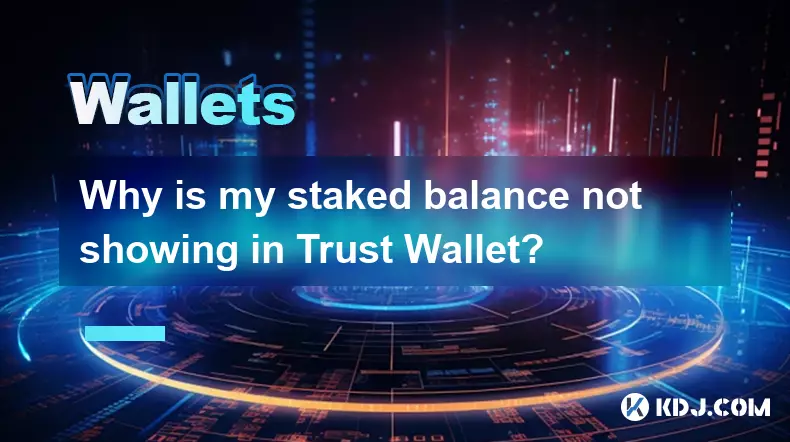
Why is my staked balance not showing in Trust Wallet?
Oct 01,2025 at 12:54am
Understanding Decentralized Exchanges in the Crypto Ecosystem1. Decentralized exchanges (DEXs) operate without a central authority, allowing users to ...
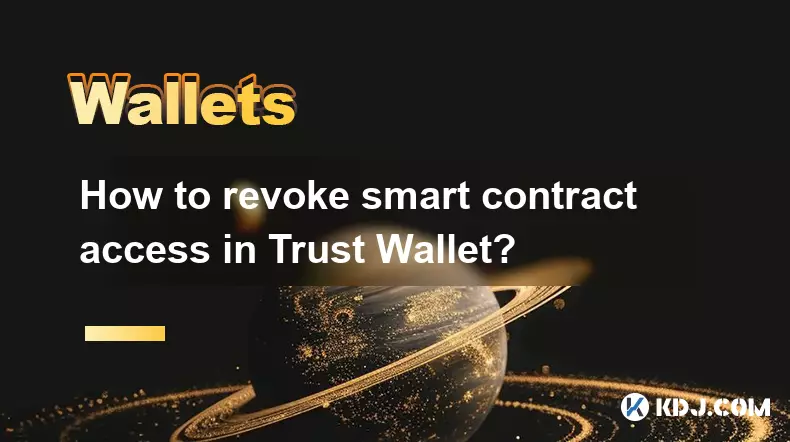
How to revoke smart contract access in Trust Wallet?
Oct 01,2025 at 12:54pm
Understanding Smart Contract Access in Trust Wallet1. Smart contracts are self-executing agreements built on blockchain networks, commonly used in dec...
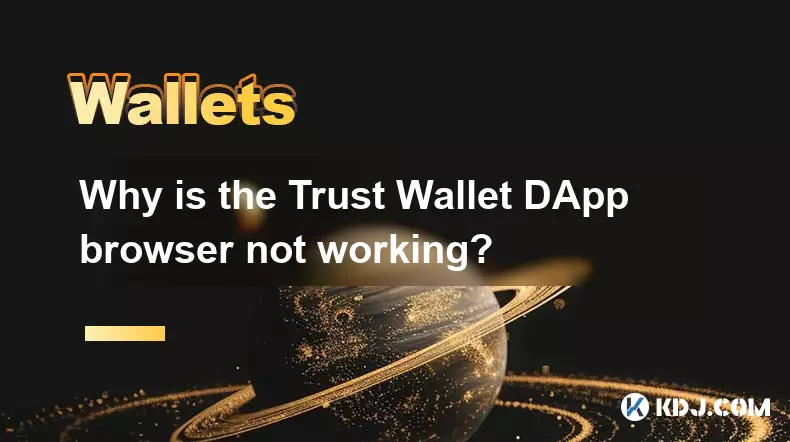
Why is the Trust Wallet DApp browser not working?
Oct 01,2025 at 05:36am
Common Causes of Trust Wallet DApp Browser Issues1. The DApp browser within Trust Wallet may fail to load due to connectivity problems. A weak or unst...
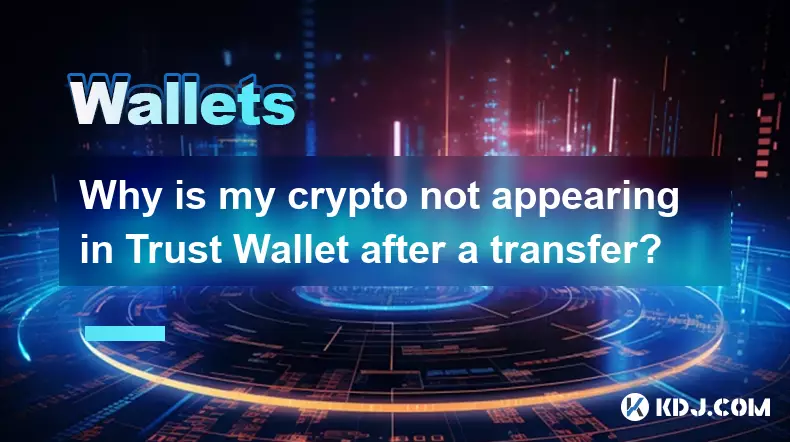
Why is my crypto not appearing in Trust Wallet after a transfer?
Oct 01,2025 at 04:36am
Common Reasons Your Crypto Doesn’t Appear in Trust Wallet1. The transaction is still pending on the blockchain. Blockchain confirmations can take time...
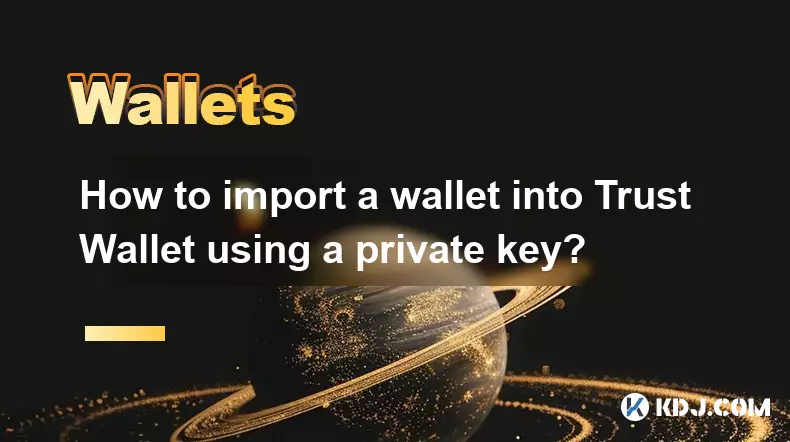
How to import a wallet into Trust Wallet using a private key?
Oct 01,2025 at 09:54am
Understanding Wallet Import via Private Key in Trust Wallet1. Trust Wallet allows users to import existing cryptocurrency wallets using a private key,...

How to get the Trust Wallet browser extension?
Oct 01,2025 at 12:37am
How to Access the Trust Wallet Browser Extension1. Visit the official Trust Wallet website through a secure internet connection. Navigate to the downl...

Why is my staked balance not showing in Trust Wallet?
Oct 01,2025 at 12:54am
Understanding Decentralized Exchanges in the Crypto Ecosystem1. Decentralized exchanges (DEXs) operate without a central authority, allowing users to ...

How to revoke smart contract access in Trust Wallet?
Oct 01,2025 at 12:54pm
Understanding Smart Contract Access in Trust Wallet1. Smart contracts are self-executing agreements built on blockchain networks, commonly used in dec...

Why is the Trust Wallet DApp browser not working?
Oct 01,2025 at 05:36am
Common Causes of Trust Wallet DApp Browser Issues1. The DApp browser within Trust Wallet may fail to load due to connectivity problems. A weak or unst...

Why is my crypto not appearing in Trust Wallet after a transfer?
Oct 01,2025 at 04:36am
Common Reasons Your Crypto Doesn’t Appear in Trust Wallet1. The transaction is still pending on the blockchain. Blockchain confirmations can take time...

How to import a wallet into Trust Wallet using a private key?
Oct 01,2025 at 09:54am
Understanding Wallet Import via Private Key in Trust Wallet1. Trust Wallet allows users to import existing cryptocurrency wallets using a private key,...
See all articles










































































